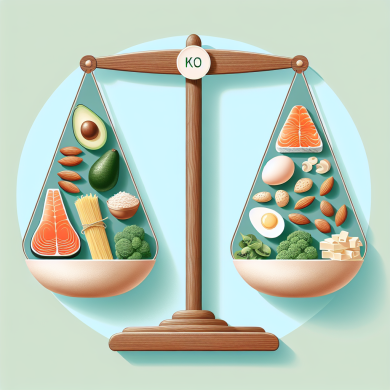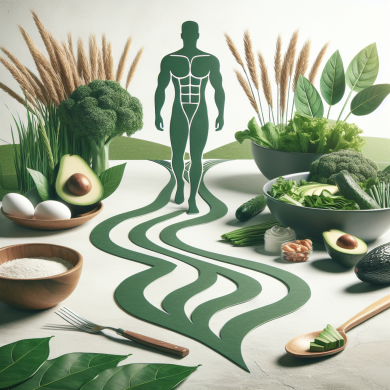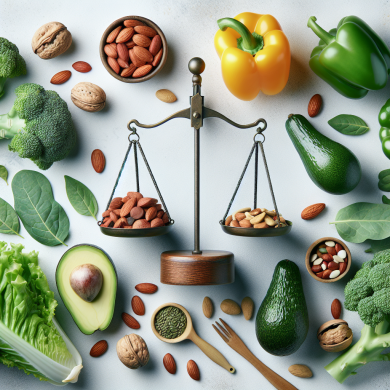Quick Steps to Achieve Ketosis Faster
Introduction to Ketosis
The ketogenic diet, often abbreviated as the keto diet, has gained immense popularity for its potential to foster rapid weight loss and improve metabolic health. Central to this diet is the metabolic state known as ketosis, where the body shifts from relying on carbohydrates for energy to burning fat as its primary fuel source. Achieving ketosis involves adopting specific dietary strategies that can seem daunting at first. However, by understanding and implementing some quick steps, you can expedite your transition into this fat-burning state. This article will guide you through these steps and help you achieve ketosis faster.
Understanding the Ketogenic Diet
Before diving into the quick steps to achieve ketosis, it’s essential to understand the foundational principles of the ketogenic diet. The diet involves drastically reducing carbohydrate intake and replacing it with fats. This reduction in carbs puts your body into a metabolic state called ketosis. In ketosis, your body becomes incredibly efficient at burning fat for energy. It also turns fat into ketones in the liver, which can supply energy for the brain.
Step 1: Reduce Your Carbohydrate Intake
One of the most critical steps in achieving ketosis is reducing carbohydrate intake. Typically, a standard ketogenic diet involves consuming only about 5-10% of your daily caloric intake from carbohydrates, which translates to about 20-50 grams of carbs per day for most people.
– **Monitor Carbohydrate Sources**: Focus on eliminating high-carb foods such as grains, sugar, legumes, rice, potatoes, candy, juice, and most fruits.
– **Opt for Low-Carb Vegetables**: Vegetables like spinach, kale, broccoli, cauliflower, and zucchini are low in carbohydrates and high in nutrients.
– **Use Carb-Tracking Apps**: Tools like MyFitnessPal or Carb Manager can help you keep track of your daily carb intake.
Step 2: Increase Healthy Fat Intake
Once you’ve reduced your carbohydrate intake, it’s crucial to compensate by increasing your fat consumption. Fat should constitute approximately 70-75% of your daily caloric intake.
– **Choose Healthy Fats**: Incorporate sources such as avocados, olive oil, coconut oil, butter, eggs, nuts, seeds, and fatty fish.
– **Mindful Meal Planning**: Plan meals that focus on high-fat ingredients to ensure you’re meeting your dietary fat goals.
– **Avoid Trans Fats**: Stay away from unhealthy fats found in processed foods and hydrogenated oils.
Step 3: Moderate Protein Consumption
While protein is an essential component of the diet, consuming too much can interfere with ketosis. Aim for a moderate protein intake that constitutes roughly 20-25% of your daily calories.
– **Select High-Quality Proteins**: Choose protein sources like grass-fed beef, free-range poultry, wild-caught fish, and organic eggs.
– **Avoid Excessive Protein**: Consuming too much protein can lead to gluconeogenesis, a process where the body converts protein into glucose, potentially disrupting ketosis.
Step 4: Incorporate Intermittent Fasting
Intermittent fasting can be a powerful tool to help you enter ketosis more quickly. By cycling between periods of eating and fasting, you can lower insulin levels and increase fat burning.
– **Popular Fasting Methods**: The 16/8 method involves fasting for 16 hours and eating within an 8-hour window. Another option is the 5:2 method, where you eat normally for five days and restrict calories to 500-600 on two non-consecutive days.
– **Ease into Fasting**: Start with shorter fasting periods and gradually increase as your body adapts.
Step 5: Stay Hydrated and Maintain Electrolyte Balance
Proper hydration and electrolyte balance are vital when transitioning into ketosis. The body tends to excrete more water and electrolytes during this process, making it essential to replenish them.
– **Drink Plenty of Water**: Aim for at least 8-10 glasses of water per day to stay hydrated.
– **Supplement Electrolytes**: Include sodium, potassium, and magnesium supplements or consume foods rich in these electrolytes, such as leafy greens, nuts, seeds, and avocados.
– **Monitor Symptoms**: Be aware of symptoms like dizziness, headaches, or fatigue, as they can indicate an electrolyte imbalance.
Step 6: Engage in Regular Physical Activity
Physical activity can accelerate the transition into ketosis by depleting glycogen stores and promoting fat utilization.
– **Incorporate Cardiovascular Exercise**: Activities like running, cycling, or swimming can help burn glycogen and promote ketosis.
– **Include Strength Training**: Resistance exercises are beneficial for maintaining muscle mass and enhancing metabolic health.
– **Stay Active Throughout the Day**: Incorporate regular movement, such as walking or stretching, into your daily routine.
Step 7: Consider Exogenous Ketones and MCT Oil
Exogenous ketones and medium-chain triglyceride (MCT) oil can provide a boost to achieving ketosis more quickly.
– **Exogenous Ketones**: These supplements can increase ketone levels in the blood, helping to ease the transition into ketosis and reduce symptoms of the “keto flu.”
– **MCT Oil**: MCTs are rapidly absorbed and converted into ketones, providing a quick energy source and promoting ketosis.
Step 8: Monitor Your Ketone Levels
Tracking your ketone levels can provide valuable insights into your progress and help you fine-tune your approach.
– **Use Ketone Test Strips**: Urine test strips are a simple and cost-effective way to monitor ketone levels, especially in the early stages.
– **Invest in a Blood Ketone Meter**: For more accurate readings, consider using a blood ketone meter, which measures beta-hydroxybutyrate levels, a primary ketone body.
– **Stay Informed**: Regular monitoring helps you understand how your diet and lifestyle choices impact ketosis, allowing you to make necessary adjustments.
Overcoming Common Challenges
Transitioning into ketosis can present challenges, but with preparation and perseverance, you can overcome them.
– **Keto Flu**: Symptoms like fatigue, headache, and irritability are common during the initial phase. Stay hydrated, consume enough electrolytes, and gradually reduce carbs to minimize discomfort.
– **Social Situations**: Dining out or attending social gatherings can be challenging. Plan ahead by researching menu options, bringing keto-friendly snacks, and communicating dietary needs to hosts.
– **Plateaus**: If weight loss stalls, reassess your macronutrient ratios, increase physical activity, and ensure you’re not consuming hidden carbs.
Conclusion
Achieving ketosis quickly and effectively involves a combination of dietary adjustments, lifestyle changes, and mindful monitoring. By reducing carbohydrate intake, increasing healthy fats, moderating protein consumption, and incorporating strategies like intermittent fasting and regular exercise, you can expedite your transition into ketosis. Additionally, staying hydrated, maintaining electrolyte balance, and considering supplements like exogenous ketones and MCT oil can provide valuable support. With dedication and persistence, you can unlock the benefits of ketosis and embark on a journey toward improved health and well-being.















Add comment